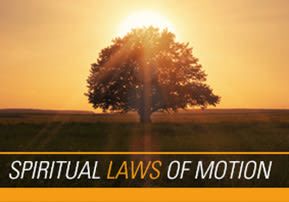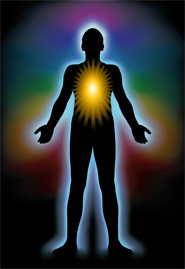
Spiritual Laws of Motion
Laws of biomechanics determine the healthy movement of the body and its limbs. The laws of the physical world are relevant to the spiritual world as well...

The Zohar teaches us that every material phenomenon has a corresponding spiritual phenomenon, for the spiritual realm is the root of the material realm. By observing the laws of the physical world, we can therefore understand the laws of the spiritual world.In the words of Rebbe Nachman of Breslev, we must look for the wisdom in every phenomenon, for that wisdom is the Divine wisdom that is instilled in that phenomenon. When we look for this wisdom, we therefore get closer to Hashem.
Kinetics is a branch of physics that deals with motion. Kinetic energy is the energy of motion; it describes the relationship between an object’s movement and the catalyst that caused the movement. When discussing kinetics, we discuss the forces that push or pull on an object and cause motion. These forces cause the object to start, stop or move, whether faster or slower.
When discussing human motion, we move over from physics to a relatively new scientific discipline  known as biomechanics. Kinematics is that area of biomechanics that deals with human motion. In the study of kinematics, we study five main variables, as follows:
known as biomechanics. Kinematics is that area of biomechanics that deals with human motion. In the study of kinematics, we study five main variables, as follows:
1. Timing – the duration of how long a bodily movement lasts;
2. Position – the current status/location of the body or a particular appendage; this variable determines the likelihood of injury.
3. Rearrangement – the movement of the body or a particular limb from one position to another;
4. Speed – how fast he movement is;
5. Acceleration – the level at which speed changes.
The practical application of kinematics is useful in physical therapy and in fitness training, particularly in diagnosing bodily-movement problems and deciding on the proper mode of corrective exercise, treatment regiment or therapy as required.
Let’s see how the above five variables work together in a practical example: a person has been sitting at a desk with his head bent over a laptop computer for two hours without changing position. For some urgent reason, he gets up from his desk in one second (#1, timing) and feels a terrible pain in his lower back. Rather than stretching normally, his lower back muscles are now contracted (#2, position) to the extent that he cannot stand erectly and is feeling sharp pain. Whereas healthy, flexible warmed up lower back muscles should have made a full-one centimeter eccentric (expansive) movement, his cold stiff muscles only moved a fifth that much (#3, rearrangement), and that was accompanied by severe pain. The individual rose much too fast (#4, speed), in an alarmed movement (#5, acceleration) that the body was not prepared for.
If the application of kinematics helps us analyze and understand problems of the body, then according to the above-mentioned principle that the laws of the physical world give us an insight into the spiritual realm, we can apply kinematics to our emotional and spiritual ills as well. Here’s how:
Rebbe Nachman once said that he couldn’t stay alive unless he made additional spiritual growth every single day.
We all know that kosher fish are those that have fins and scales. But if a fish swims against the current, like a salmon, we know that it must be kosher. The Gemara tells the story of a person who asked his rabbi about whether a questionable fish[1] was kosher or not.[2] The rabbi asked them where they found the fish and they answered that they fished it out of a strong current in the river. The rabbi answered, “Go enjoy the fish – it is surely kosher.” Rashi explains that an unkosher fish would not have been able to weather the river’s strong current.
Teshuva is essentially the discipline of spiritual kinematics, the motion of the soul in getting closer to Hashem, for this is not only the soul’s purpose on earth but a basic requirement that insures its health. Depression, unhappiness and negative emotions are signs of faulty movement of the soul, a problem in spiritual kinematics. The soul needs its form of therapy, just as an injured limb would need physical therapy. The soul’s therapy is teshuva and emuna: both create fluid and healthy movement upwards, toward Hashem, where the soul wants to be. Like the person bent over the computer who gets up with a sore back, the a cold and stiff soul also has trouble functioning properly. Teshuva and emuna, particularly daily personal prayer and self-assessment, warm the soul and enable it to function with ease and with comfort, in what we might call “spiritual agility,” which prevents sprains and tears of the soul just as a good exercise warmup prevents sprains and tears of the muscles. Such a soul is healthy, agile and happy, fulfilled and internally content no matter what’s happening on the outside. That’s what we mean by proper movement of the soul, healthy spiritual kinematics.











Tell us what you think!
Thank you for your comment!
It will be published after approval by the Editor.